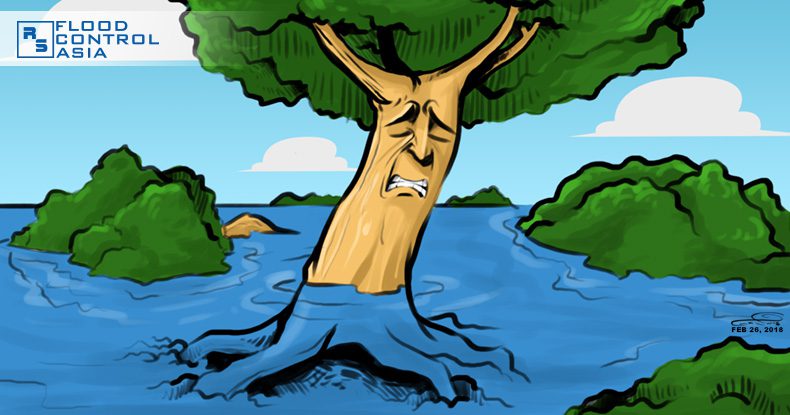What effects does flood have on forests?
February 27, 2018 | Created by: Andreas Klippe | Comments
Forests play a great factor in controlling flood. During rainy season, trees absorb water. Any flow of water is hampered by a cluster of trees; thus slowing down the flood’s descent.

Trees also hold back and delay the flow of rainwater to streams and rivers. The soil tend to have a more open area which results from greater amounts of organic matter. They are also drier during summer periods due to high water consumption of forests. These conditions enhance the ability of the soil to receive and store rainwater, which is commonly referred to as a ‘sponge effect’.
However the forest’s sponge effect is limited when there is a very heavy rainfall in the wet season. Forest soil can generally get waterlogged with a reduced capacity to receive and store rainwater.
The average duration for trees to survive in flooded areas is four months. Any more than that and the trees will start to deteriorate. The best option would be to build a drainage that will remove excess water.
Long duration floods can severely affect the development of trees especially during their growth period. Flood may decrease a tree’s height and diameter. On the other hand, it may spur growth for more flood-tolerant trees.
The general assumption is flood does not affect trees, since it only happens during wet season and trees need water to grow and thrive. However, depending on the make-up and duration of flood, it can also inflict damage to trees.
How a flood affects a forest depends on many factors. There are trees that are adapted to occasional floods and are more resilient when waters rise. Older trees fare better too, because their bark are thicker and their roots are more expanded.
The other factor is the makeup of the flood. Contamination, salinity, germ, and bacteria content will determine if a forest can survive a flood.
Things that can happen when a flood hits a forest:
- Rushing floods can wash away the topsoil; thus, undermining the roots. They can also damage tree barks, exposing them to elements. Exposed roots can weaken a tree’s foundation, which can result to a tree being toppled down.
- Exposed roots can be susceptible to diseases like armillaria root disease, also known as shoestring root rot. It can cause wood decay, growth reduction, and death to hundreds of tree species. Exposure commonly infects and kills trees already weakened by other factors like drought and insects.
- A tree can also suffocate if completely submerged in floodwater. Sediment, mud, and standing water will saturate the soil; thus, depriving it of oxygen. As little as three inches of sediment can be harmful. All tree seedlings are susceptible to root injury from sediment.
- Flood waters that reach to the levels of branches could interfere with the production of photosynthesis for their nourishment and exchange of gas. Leaves absorb carbon dioxide and expel oxygen to produce sugar.
- Contamination can also affect trees’ health. With rising sea level, groundwater salinity will increase; thus, robbing the trees freshwater to survive. The trees will become weaker and will grow more slowly.
- Also, chemicals from agricultural land and urban centers can be carried by flood. These chemicals can be harmful for trees, too.
Flood is generally good for trees!
Forest flooding is generally good. Flood can clear weaker trees, weeds and other parasite plants that compete with the trees for nutrients.
Caring for the forest is a community effort. Everyone must be involved in safeguarding forests, for they will protect us from the deadly flash floods.
What would you do to save the forests? Post your suggestions below.






